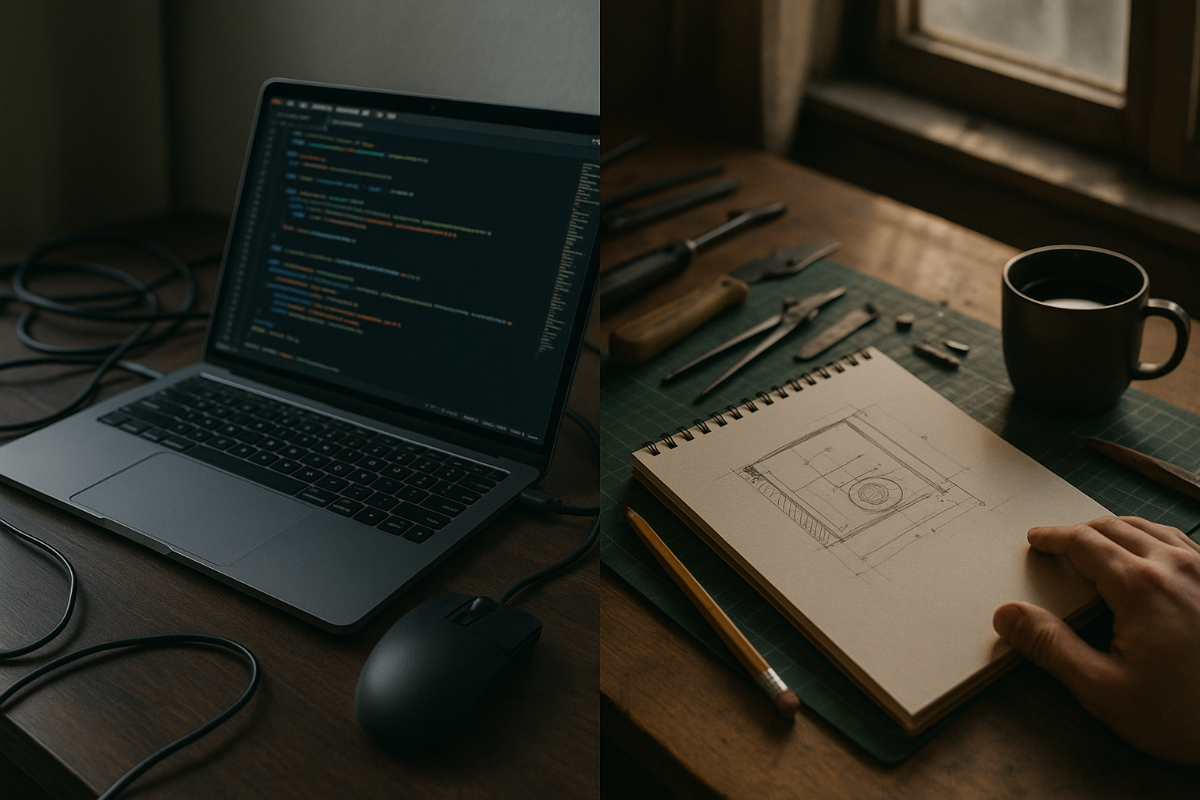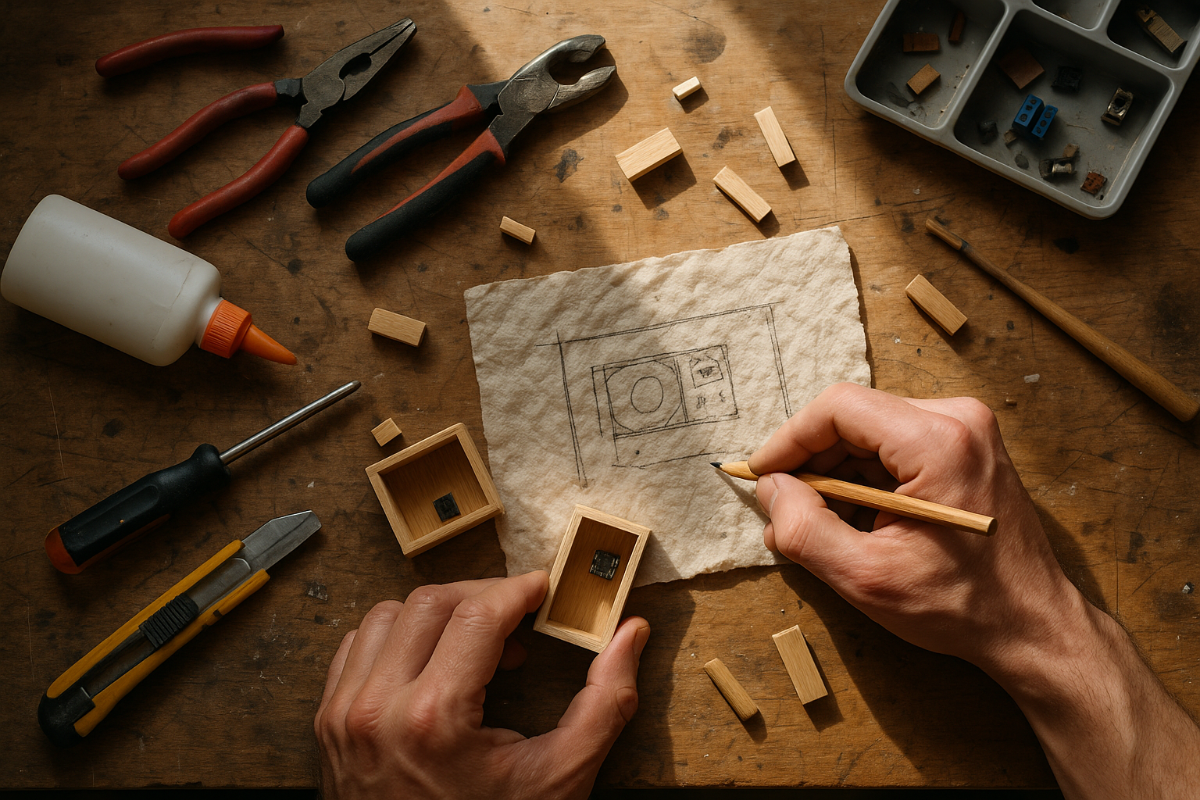Weaving Creativity Into the Work
✍ Creative Ideas Journal | June 17, 2025

We are in the midst of an industry shift. AI adoption is accelerating, and layoffs are becoming increasingly common. It feels like the right time to pause my IT career and focus on developing my creative skills, not the abstract kind, but practical work such as drawing, designing, and prototyping. Engineering and creativity are often viewed as opposites, but I see them as different tools. Currently, I am focusing on the one I’ve set aside for far too long.
A Moment of Harmony: Creativity Solving Technical Problems
Early in my career, I was part of a university research group comprising artists, scientists, and engineers. This unique combination functioned effectively as everyone approached problems in their own way while collaborating to achieve shared goals.
One moment that stands out to me is a project where we designed an interactive experience. The engineering team, including myself, focused on content delivery and user interface programming. However, the direction shifted when the client framed the problem in terms of televised news broadcasting. Instead of concentrating solely on the technical aspects, we began to consider how people would experience the interactive project. Our goal evolved from making it functional to making it meaningful.
That moment revealed to me that creativity not only enhances technical work but can also completely alter its trajectory. Stepping beyond the usual problem-solving mindset allowed us to create something better. That experience has remained with me and continues to shape how I approach work today.
What Inspiration Looks Like
Inspiration typically doesn’t strike out of nowhere. It often appears when I step away from the problem and allow my mind the space to think.
I often discover ideas while sketching, organizing tools, walking, or actively working on non-IT projects. Ideas do not arise instantly; rather, they develop over time through small observations and shifts in perspective.
Sometimes, something as simple as a worn machine part or a failed prototype can spark a new approach. Once, I redesigned a smart lighting setup after observing how people interacted with switches and doors. That small shift resulted in a more intuitive layout, making spaces easier to navigate for individuals with impairments or guests in unfamiliar places.
Inspiration involves noticing what others overlook. You improve at it by remaining curious, experimenting, and not stressing too much about the result. It isn’t about pursuing a perfect idea; rather, it’s about allowing yourself more opportunities to recognize a good one.

How to Build Your Creative Muscle
Creativity improves with use. Like anything else, it takes time and effort. You need to make room for it and step away from your regular routines.
I learn a lot by watching how others solve problems. Whether it’s an artist, an engineer, or someone working with their hands, I pay attention to how they think and the patterns they use. Then, I try to apply that thinking in my own way.
The best way to grow is to create something. It doesn’t have to be perfect. Begin with an idea and bring it to life. Sketch it, mock it up, and test it. You learn more by doing than by waiting for everything to fall into place.
Creative work often feels chaotic. That is part of the process. The key is to push through hesitation and begin. Even failure can propel you forward.
To strengthen your creative thinking, do not treat inspiration as a rare commodity. Feed your curiosity, take notes, and set aside time to build. Talent helps, but practice is what keeps it going.

Wrapping It Up
Stepping away from technology has allowed me to engage the part of my brain that is not focused on specifications and diagrams. This creative work has enabled me to approach problems from fresh perspectives and rekindle my passion for making things.
Whether you are in IT, design, trades, or just trying to figure things out, adding creative work into your process can shift how you approach everything else. You do not need a perfect plan. You just need to start.
For me, I have started by launching a small Etsy shop to test out a few ideas and see where it goes.
Thanks for reading.
–Salim
P.S. This blog post was inspired by a recent book I read titled ‘Every Tool’s a Hammer: Life Is What You Make It’ by Adam Savage